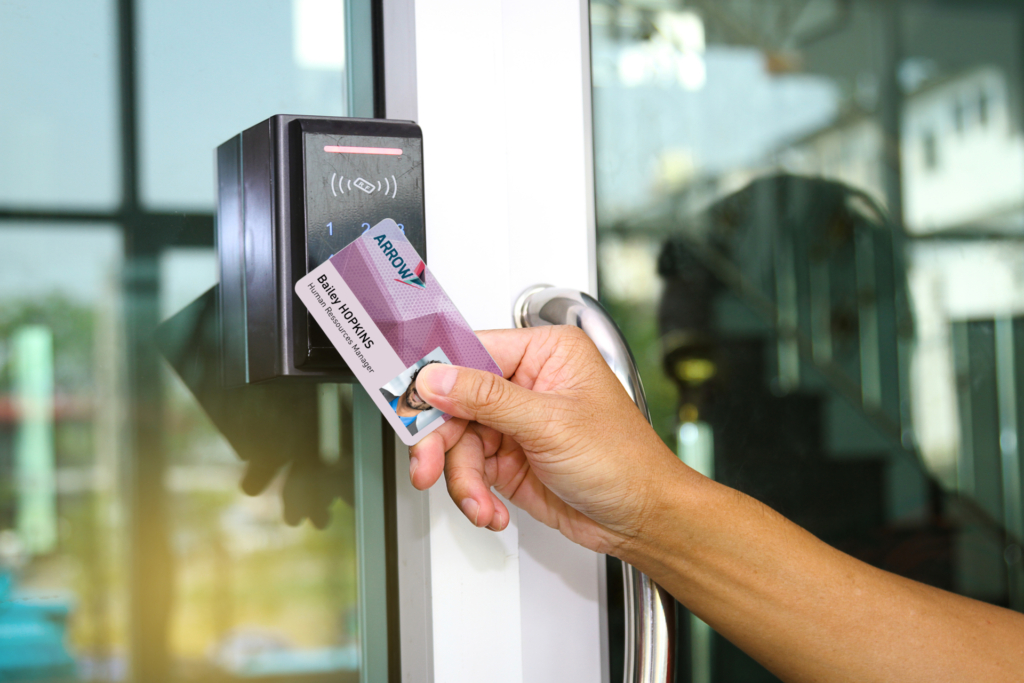5 questions to evaluate the sustainability of your company’s access control system
Ensuring the protection of the people on your premises, your physical assets (buildings, equipment, goods), and your sensitive data is crucial. This requires the use of an access control system that guarantees a level of security adapted to the requirements and constraints of your organization. Therefore, ensuring the sustainability of the system you have in place is paramount.
We are here to guide you by asking you five questions to evaluate the effectiveness of your system.
1. Does my system correspond to the challenges facing my organization today ?
This first question will allow you to assess the adequacy of your access control system to match your current needs. Since the implementation of your system, your business, your ecosystem and your environment have evolved, potentially creating new challenges.
• Internal factors :
Is your access control system still adapted to your organization’s workforce?
Does it manage to handle people flows, especially when employees arrive and leave?
Similarly, if the configuration of your premises has changed, has your system been able to adapt to this at all points or are there any gaps?
Finally, is your current system able to manage the changes in the data to be secured (volume and typology)?
• External factors :
The external environment must also be taken into account in your assessment and any changes in the risks of intrusion and burglary also seriously considered. Competitive and political circumstances also bring new challenges, as does the public health situation.
To what extent is your organization exposed to a risk of industrial espionage or a terrorist threat ?
For access to buildings or sensitive areas, does your system allow you to maintain a level of distance between people and avoid physical contact with the equipment as much as possible?
Finally, regulatory aspects may impose new constraints. For example, GDPR regulations aimed at strengthening the security and confidentiality of personal data may require an adaptation of the system.
2. What is the track record of my access control system to date ?
Your access control system must be quantified in terms of the number of failures it has demonstrated and the additional costs it has generated. Ideally, this assessment should be carried out on an ongoing basis to prevent and limit risks and to take corrective action in a timely manner.
In order to estimate the costs incurred by your access control system as accurately as possible, it is important to take the following into account :
• Visible costs : thefts, system maintenance and repair operations, fines for non-compliance with regulations in force, etc.
• Non-visible costs incurred : such as time spent managing recurring system failures.
The data obtained in this way allows you to measure the efficiency of your system and to make the appropriate decisions: from simple updates to necessary changes, up to the total replacement of the system. This can sometimes be the most economical option.
3. What is the feedback from users of the system ?
If your access control system is to be evaluated using measurable and quantifiable data, it is also essential to collect feedback from teams on its day-to-day use. This information is key to assessing the sustainability of the system in place and guiding you in your choices.
• Users of the system : the question is whether the system is delivering on the promises made when it was set up.
Does it simplify the user experience?
What aspects of the system are unsatisfactory?
What avenues for improvement should be explored?
All of these questions will provide valuable information for improving the system in place while enhancing your company’s overall security and providing more comfort to users.
• System managers : obtaining feedback from people who are confronted on a daily basis with access control issues is essential to your evaluation process. Whether they are in charge of access management (authorizations) or in charge of the equipment that makes up your system (access badges, readers, etc.), they will be able to tell you if they have encountered difficulties with the current system.
How easy is it to update access rights?
Is its operation as autonomous as possible in order to limit human intervention, a potential source of error?
It may also be interesting to ask them about their perception of the effectiveness of the system for external stakeholders (customers, providers, suppliers, and other audiences).
4. Can I use my current access control system to add functionality ?
To assess the sustainability of your access control system, it is important to ask yourself about its ability to evolve and adapt to the new needs of your organization. For example, is the current arrangement able to incorporate additional services (such as access to photocopiers, printers, and vending machines)? If the answer is yes, this will allow you to:
• Optimize your investment by combining several functionalities into one single system,
• Bring greater comfort and convenience to your users for greater levels of satisfaction,
• Contribute to the modernization of your organization and simplify its operation.

An access control system based on personalized, encoded cards allows such an evolution of functionalities. Access badges then become multi-functional, simply by encoding the data needed to access different services within the magnetic strip or chip (with contact or contactless RFID).
Magnetic cards and smart cards can be easily reprogrammed to add, delete, or modify data. This flexibility allows you to keep a single medium, the card, and make it evolve according to your needs, without having to replace your existing readers.
If you choose to issue access badges yourself for a greater level of independence and responsiveness, some card printer models can easily be equipped with encoders.
5. How can I upgrade my access control system?
Thanks to the answers to the previous questions, you are now in a position to assess the sustainability of your access control system. You are therefore in one of the following three situations:
1. Your system is reliable and gives complete satisfaction to its users: you keep it that way while monitoring its key performance indicators,
2. Your system must evolve to meet your current and future challenges and needs,
3. Your system is obsolete and you should consider replacing it in the short to medium term.

In the last two cases, it may be relevant to look at a card-based solution that has the following advantages:
- It allows for visual identification at all times, by simply wearing a badge, which other access control systems cannot offer.
- It adjusts to the level of security required within your organization through the various elements that can be integrated on the cards: graphic personalization with photo (visual identification), barcode or QR code, data encoding on a magnetic strip or chip, holograms (generic or personalized), addition of lamination film for enhanced card protection, printing of elements invisible to the naked eye (ultra high definition micro-text, UV ink).
- It is scalable due to the encoding of data on the cards: you need to update access rights or add features to your system, re-encode your cards and that’s it!
- It is affordable and is compatible with many existing reader models, resulting in a reduced level of investment.
- It allows for process automation: encoded cards are read automatically by special devices with limited human intervention.
Finally, it is important for a project of this kind, which must respond to the major challenges for your company, to work with a partner of choice, recognized for its expertise and the reliability of its systems as well as for its aftersales services, which are essential for guaranteeing the durability of your investment.


